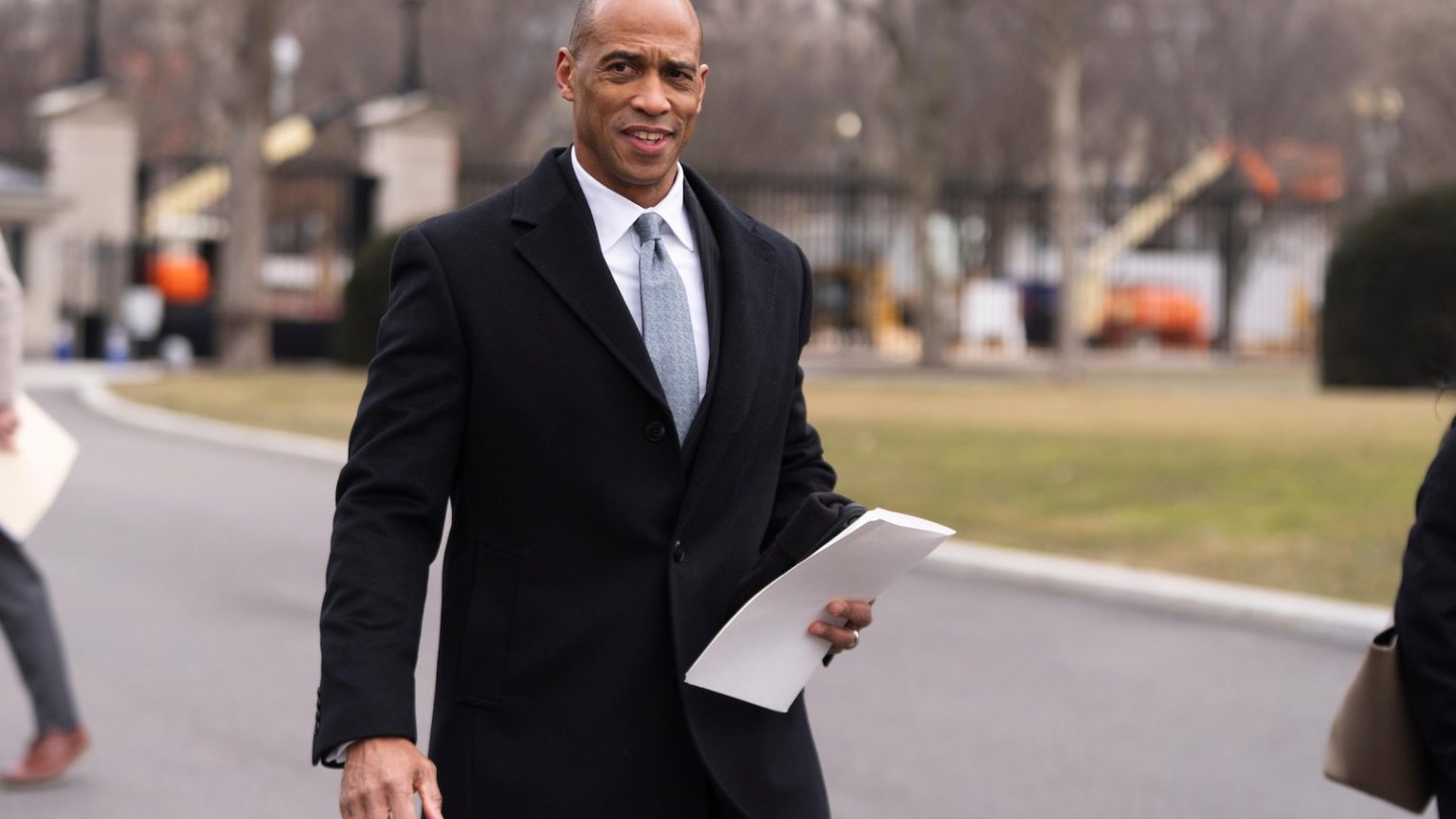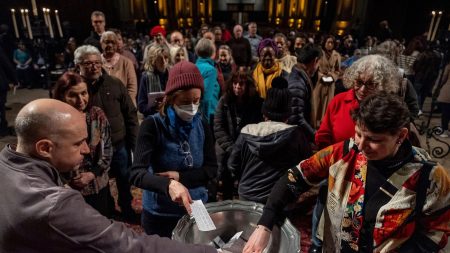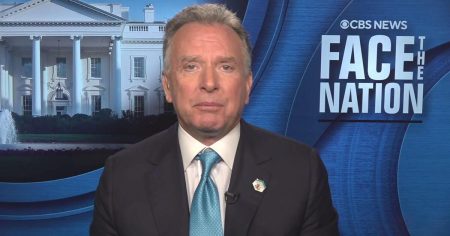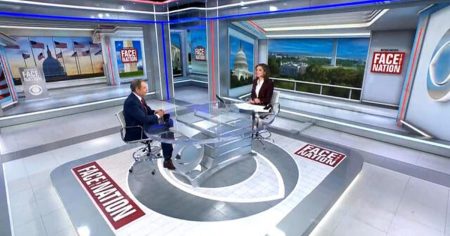The Trump Administration’s Proposal to Slash HUD Staff: A Deep Dive into the Implications
The Trump administration’s latest proposal to reduce the federal workforce at the Department of Housing and Urban Development (HUD) by approximately half has sparked significant concerns among housing advocates, former HUD officials, and industry experts. According to documents obtained by The Associated Press, the proposed cuts would affect over a dozen critical programs within HUD, potentially crippling the department’s ability to deliver on its mission to support disaster recovery, rental subsidies, discrimination investigations, and first-time homebuyers. The plan, which outlines the elimination of around 4,000 positions, has raised alarms about the potential slowing or stalling of HUD’s essential work. HUD spokesperson Kasey Lovett emphasized that the leaked documents "should not be taken as final," as the agency is currently evaluating its staffing needs. However, the proposals have already begun to generate anxiety among stakeholders who fear the consequences of such drastic reductions.
The Office of Community Planning and Development: A Lifeline in Jeopardy
One of the most severely impacted offices under the proposed cuts is the Office of Community Planning and Development (CPD), which faces an unprecedented 84% reduction in staff, dropping from 936 employees to just 150. This office plays a pivotal role in repairing homes and infrastructure after natural disasters, a function that has been crucial in the wake of hurricanes like Helene, which necessitated the allocation of $1.65 billion to North Carolina. CPD also oversees homelessness initiatives and the Community Development Block Grant (CDBG), a program that channels billions of federal dollars to local governments for community development projects, including libraries and affordable housing. The proposed cuts have led to fears that disaster relief efforts will be significantly delayed, leaving countless communities without the support they desperately need. Ann Oliva, a former HUD official and current CEO of the National Alliance to End Homelessness, warned that the reductions could lead to substantial delays in funding disbursement, exacerbating the already pressing issue of homelessness. "We’ve already heard from programs that have said, ‘We are going to go ahead and pause taking new folks for right now until we understand what’s happening to our funding,’" Oliva remarked. While Lovett assured that "disaster relief efforts will not be impacted," the lack of elaboration on how this will be achieved has left many skeptical.
The Office of Public and Indian Housing: Rental Assistance at Risk
The Office of Public and Indian Housing (PIH), which provides rental assistance subsidies to over 3.5 million households and supports public housing for approximately 1 million individuals, is also in the crosshairs of the proposed cuts. The documents suggest that the office could see its workforce halved, reducing the headcount from 1,529 employees to 765. This significant reduction has raised concerns about the potential slowdown in payments for the Section 8 vouchers program, which offers rental assistance to millions of low-income Americans. Georgi Banna, general counsel for the National Association of Housing and Redevelopment Officials, expressed frustration over the lack of clarity from the administration regarding how the staff reductions will be implemented and how HUD’s critical work will continue in the event of mass layoffs. Banna highlighted the importance of landlord participation in the Section 8 program, noting that "this program only works well when landlords are involved. Without landlords, this program can’t exist." If landlords were to abandon the program due to payment delays or other disruptions, millions of vulnerable tenants could face displacement, exacerbating the nation’s housing crisis.
The Office of Housing: A Blow to Homeownership Opportunities
The Office of Housing, which could face a 44% reduction in staff, is another critical component of HUD’s operations that stands to be severely impacted by the proposed cuts. This office is responsible for providing counseling for first-time homebuyers and administering mortgage insurance through the Federal Housing Administration (FHA), making homeownership more accessible to middle- and lower-income Americans. The loss of over 1,000 employees could significantly slow down the processing of mortgage insurance applications, thereby delaying opportunities for potential homeowners. Antonio Gaines, a HUD employee with over two decades of service and president of AFGE National Council 222, which represents HUD workers, warned that "there are going to be consequences all the way across the board." While HUD has stated that it will continue to prioritize "the critical role FHA plays in the mortgage market," the steep staff reductions raise questions about the agency’s ability to maintain its current level of service. The cutbacks could ultimately hinder the ability of many Americans to achieve homeownership, a cornerstone of the "American Dream."
The Office of Fair Housing and Equal Opportunity: Fighting Discrimination in Jeopardy
The Office of Fair Housing and Equal Opportunity (FHEO), which serves as the primary enforcer of the nation’s fair housing laws, is also facing dramatic cuts under the proposed plan. The documents suggest that the office could see its workforce reduced by approximately 77%, dropping from 572 employees to just 134. This drastic reduction has raised concerns among housing advocates, who fear that the agency’s ability to investigate discrimination complaints and enforce fair housing laws will be severely diminished. Shamus Roller, executive director of the National Housing Law Project, noted that the office is already struggling to perform its basic functions, and the proposed cuts would only exacerbate the problem. While HUD Secretary Scott Turner has committed to upholding the Fair Housing Act, the significant reduction in staff raises questions about how effectively the agency can carry out its mandate to combat discrimination in housing. The proposed cuts have been interpreted by many as part of the administration’s broader push against diversity, equity, and inclusion initiatives. In a recent statement on X, Turner announced that HUD had canceled $4 million in DEI contracts, further fueling concerns about the agency’s commitment to these values.
The Broader Context: A Push for Government Efficiency
The proposed staffing cuts at HUD are part of a larger effort by the Trump administration to reduce government spending and streamline federal agencies. HUD Secretary Scott Turner has been a vocal proponent of this agenda, recently touting his new Department of Government Efficiency task force, which is reportedly inspired by billionaire Elon Musk. Turner has also announced the identification of $1.9 billion in "misplaced funds" and $260 million in "wasteful contracts," framing these discoveries as evidence of the need for greater fiscal responsibility within the agency. While the administration has framed these efforts as necessary to improve efficiency and eliminate waste, critics argue that the cuts are being made at the expense of critical programs that provide essential support to vulnerable populations. Lovett emphasized that "HUD is following direction from the administration while also ensuring the department continues to deliver on its critical functions, mission to serve rural, tribal and urban communities and statutory responsibilities." However, the sheer scale of the proposed reductions has led many to question whether the agency can realistically fulfill its mission with such a significantly diminished workforce.
Conclusion: The Human Cost of Drastic Cuts
The proposed staffing cuts at HUD represent a significant shift in the direction of the agency, one that could have far-reaching consequences for the millions of Americans who rely on its programs. From disaster recovery and rental assistance to homeownership opportunities and fair housing enforcement, the impact of these cuts will be felt across a wide range of critical areas. While the administration has framed the reductions as a necessary step toward greater government efficiency, the potential human cost of these cuts cannot be ignored. As the debate over the future of HUD continues, one thing is clear: the stakes are high, and the lives of countless Americans hang in the balance.















